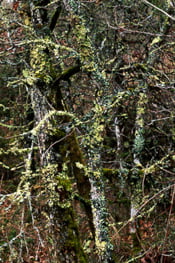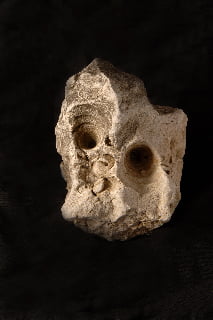Things to do for non-golfers

La Chaise is so much more than just a pleasant, rustic house that you have ‘borrowed’ for a week or so, with pool and golf course and not having to mow the grass or prune the roses. The valley was farmed organically before that term was codified, perhaps because previous owners could not afford the ‘modern’ chemical treatments that have so modified much of the countryside. But the reasons are unimportant: at La Chaise you will find birds, butterflies, wild flowers, lichens and ferns, small and large wildlife, that is absent from so much of the modern, farmed countryside.
Visiting naturalists and wild-life enthusiasts of previous years have left behind them lists of butterflies, birds and bugs than can be seen. The Farmhouse sitting room is decorated with photos of butterflies captured at La Chaise, including many of the beautiful blues. They can be seen in real life amongst the juniper bushes along fairway 4/5 as the buzzard wheels and mews above, watching to pounce on field mice. Thank you for the pictures – and come back – Dave Flynn from York.
Eileen Astbury left us wonderful watercolours of the wild orchids she found, later so beautifully photographed by Richard Becker. And some visitors have been known to time their evening drinks to the arrival of the nightjar whose ‘churring’ at dusk signals another lovely day for the morrow.
For those children who have read ‘Swallows and Amazons’ or ‘Robinson Crusoe’ – or any self-help adventure book – there is the possibility (with parents’ permission) of rebuilding the den in the woods above fairway two. It was started about five years ago and is now in need of some TLC with new branches, bracken and string.
And a couple of years ago, a splendidly commercially minded pair of children collected many, many carrier bags of the various fir cones available. They carefully dried them on the Jotul in the Farmhouse sitting room so that they would open. Then took them home to England to sell to their local florist…

The lack of chemicals in the soil and the pure air of La Chaise mean that many of the more fragile forms of plant life survive. There is a wonderful variety of lichens on the trees, bushes and fence posts just begging to be identified. In the woods, clumped on decaying stumps or heaps of stones, there are many forms of moss. Some looks like micro miniature palm trees, another like very minute ferns. All of it would be a florists delight – do children still make moss gardens and does anyone have the 1950’s pocket book: ‘An Observer’s guide to Lichens and Mosses’? Mine got lost in my travels.
There is a very curious feature of the valley: the ravine, our very own private wildlife reserve (and golf ball grave). It starts just beyond greens 1-7 and extends to green six, being closed by the Pont François. In parts it is about four metres deep, at its widest it is five metres across, once bridged by the broken branches of a willow, since destroyed by the millennium tempest. Local theory has it that this was formed by successive centuries of ploughing in parallel to a marshy stream bed, the edges gradually building up, winter rains washing the floor away. It is used by birds and all manner of small, four legged wild life as a source of water and food – however often we straighten the wire fencing round it, it gets trampled down.
However, as the leaves fall and the rains come, other strange phenomena come to the surface. In particular the fossils rise up through the earth and appear in strange places. It is odd to think that once the territory of La Chaise was under water – but the fossils show it was. There are even fossils in the corner stones of the Farmhouse. I have started a collection at the foot of the nearest oak to green 6. Some enthusiastic visitors have borrowed hammers to break the stones thrown up from the fields in the days when they were cultivated – with a little success.

But the best effort of all was made by the Clun Forest sheep: they unearthed the fossil shown below from the roots of a plum tree. It may look like a skull but, I kid you not, it is formed by an aggregation of fossils.
(Thanks to Michael Baillie, photographer of fast cars and occasional visitor to La Chaise).
